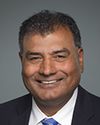We would have to dig in further to say for that particular line of recommendations, the 80-some in the last few years, how many actually ended up in refusals or in admissions.
Evidence of meeting #78 for Citizenship and Immigration in the 42nd Parliament, 1st Session. (The original version is on Parliament’s site, as are the minutes.) The winning word was services.
A video is available from Parliament.




